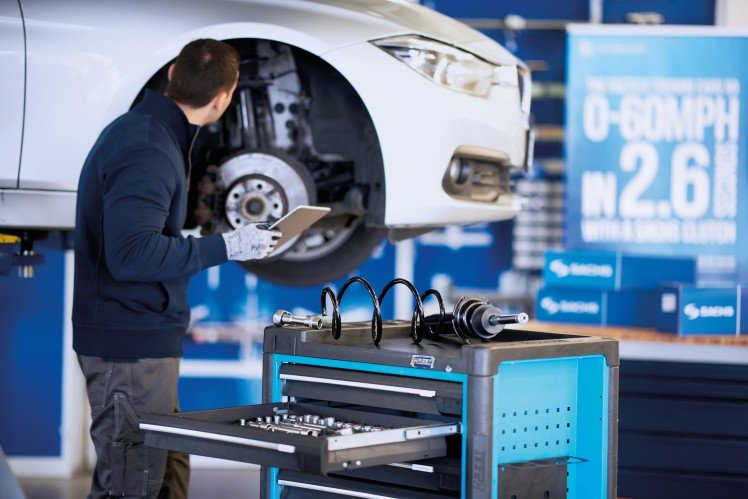www.auto-innovations.net
29
'19
Written on Modified on
ZF News
Chassis check for winter season prevents expensive repairs
More and more drivers are using all-season tyres and abandoning seasonal tyre changes.

In 2018, 45 percent of Germans went on holiday by car. And these long-haul journeys place a particularly heavy burden on the vehicle: with family and holiday luggage, the maximum payload is quickly reached. In addition, the roads in many holiday countries (not least in Germany itself) are often in poor condition. Suspension springs, dampers and chassis parts are subjected to extreme conditions as a result.
And if you drive south and cross the Alps, you also bring your brakes to the limit and often also to the wear limit. In other words: after the summer the car absolutely needs a chassis check in order to pass the coming winter season.
Responsible workshops therefore immediately check the chassis as part of the seasonal wheel change and determine the need for repairs to brakes, wheel suspensions and dampers. But with the increasing market share of all-season tyres, this customer contact is no longer necessary. In a survey conducted by the ADAC in 2018, 25 percent of motorists said that they used all-season tyres - five years ago it was only 15 percent.
Workshops must therefore find new ways to convince customers of the necessity of a seasonal workshop visit. A chassis check is a good idea here, because slight damage to chassis parts can lead to expensive follow-up repairs due to the winter road salt attack and subsequent corrosion. The following damage information can be included by the workshops in their customer approach:
Example 1: If a stone thrown up damages a steering cuff, water and salt can enter the joints of the steering rod and the steering gear. As a result, the rack corrodes and rubs with the rough surface the seal through to the steering cylinder. Oil loss and a failure of the power steering are imminent. Even electric steering systems are not spared damage, as corroded parts can cause noise, stiffness and other problems.
Example 2: The piston rod of the vibration damper and the suspension spring also suffer from small stones or splinters that are swirled up. Small craters in the chrome of the piston rod can damage the seals, which leads to oil leakage in the damper and thus to a loss of damping effect. In the case of the suspension spring, local rust spots cause a notch effect; in the long term, the spring can break at this point.
Example 3: Regarding brakes, the service consultant should not only pay attention to the wear condition, but also to scoring in the disc. This is because stones whirled up between the brake disc and the brake block can also "immortalize" themselves on this assembly in their own way.
All these are good reasons to invite car drivers with all-season tyres to a seasonal check in the workshop. ZF Aftermarket provides support for this. With its brands Lemförder, Sachs, and TRW, the Aftermarket Organization is the full-range supplier for chassis: The range includes steering systems, chassis and steering components, shock absorbers, disc and drum brakes, and rubber-to-metal parts. ZF Aftermarket also supports automotive dealerships with technical information and installation instructions. And with the ZF pro[Points] bonus program, garages can collect points every time they buy ZF spare parts.
www.zf.com

